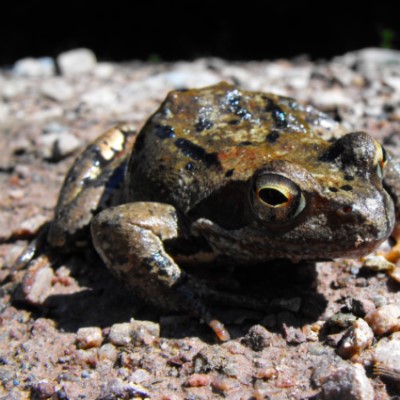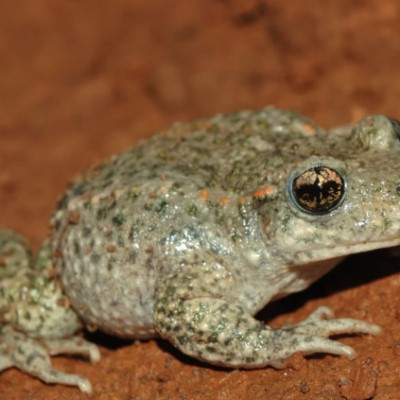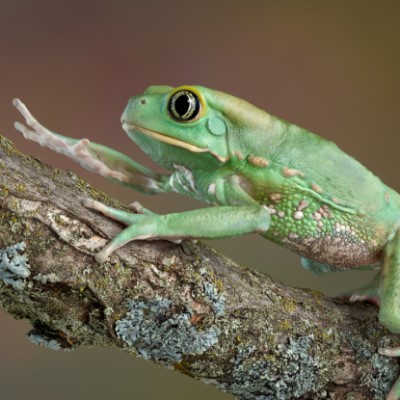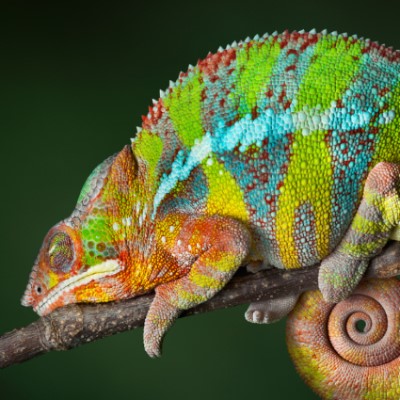Common Reasons for Surrender
Because the Anole is so inexpensive to buy ($5 or $6 each), they are generally not surrendered. The anole and his cage may cost $20 and some of them live through the summer when the child can go outside and catch bugs for the lizard to eat. In the colder months, parents oftentimes do not want to purchase live insects at a pet store, so the anole literally starves to death after a child returns to school.
Pros
The tank set up can be a lot of fun with this lizard. It’s possible to set up an actual terrarium with soil and live plants and create your own little jungle for your lizard. You can put reptile bark over top of the soil and the anoles will thrive and even breed in that environment. The anoles have a flap of skin under their chin called dulap. A bone called the hyoid bone looks like a flag coming out below their chin. The dulap can be magenta or pink on a green anole and scarlet red with speckles or even yellow on the brown anole.
Cons
Make sure you are home every single day to spray the lizards and the tank. If you forget one day, the lizard will make it, but you can’t go on vacation for a few days or the anole will die. Someone has to come in to feed and mist the tank.
Diet
Anoles eat small insects including fruit flies, wax worms, mealworms, crickets, and a new product called Phoenix Worms, which can be bought at a pet store. Your pet store may have a vitamin/mineral supplement that you can sprinkle on the insects before feeding your anole. In the summer, you can catch insects for them and feed them live. Remember, you will mist the tank every day. The anole drinks droplets of water that form on the plants rather than drinking from a water bowl.
Exercise
Provide a large environment and they will cover that tank top to bottom and front to back. Anoles have a flap of skin under their chins called dulap. They like to flip this dulap out and find a prominent spot in the tank and do pushups. The brown anoles especially do these pushups, which is a territorial display for females.
Possible Health Issues
The anoles are a small and a delicate animal and if they get to that point where you can recognize something is wrong with them, it’s all but impossible to treat them. The best thing is to avoid getting a sick animal to begin with. The way to detect sickness when you purchase an anole is do not get an anole with black spots which can be wounds or bacterial fungus and infection of the skin. An animal that lies around and is easily picked up is not a good choice. Their eyes need to be clear, not gaping as they breathe.
Like most lizards, the anole will drop its tail to escape from a predator. The tail will regenerate and grow back in eventually, but it will not look as nice as the original tail. You have to be careful when handling the anole.
Housing
The anole is inexpensive and not too picky about his housing as long as he’s given proper care. You can set up a nice anole habitat for $50 or less.
Two males will fight one another, so it is wise to buy one anole per five-gallon aquarium or buy a large enough aquarium (at least a 10 gallon tank) that each male can stake out his own territory. You may buy one male and one female as they will get along together. This lizard loves to climb and sleep in branches, so be sure to provide climbing plants, plastic or real, with a layer of reptile bark on the bottom of the tank. Plastic plants need to be purchased from a pet store to make sure they are not toxic.
The anole can thrive in temperatures between 70 and 90 degrees and needs at least eight hours of sunlight. Use a heat lamp set off to one side of the tank so if he wants to bask he can go bask or move away from the light and get cooler. Anoles prefer to bask on a branch, so set up the tank with a branch that is angled upward toward the heat lamp. You may use a plastic flowerpot saucer to provide shallow water for bathing.
Grooming
It’s imperative that you mist the tank. The anole needs the humidity, and he will drink the droplets of water left on the plants. Live plants are an asset because they help out with humidity. Pick up the droppings that you see and spot clean the tank. Most of the time you just clean the glass.
Training
They may have owner recognition where they slowly realize that you’re the food delivery person and they will hop up. Other than that, anoles don’t do anything beyond their natural behaviors.
Entertainment
Anoles love to chase each other around the tank. A male may chase the female around the tank for an hour, then stop chasing and put out their dulap. In fact, one of the most entertaining aspects of adopting an anole is watching the employee at the pet store try to catch it. This animal is active, cruises, and jumps all over the tank.
ADDITIONAL RESOURCES
The Lizard Keepers Handbook by Philippe De Vosjoli
We want to thank Lancaster Herpetological Society, Lancaster, Pennsylvania, for help with this profile.






